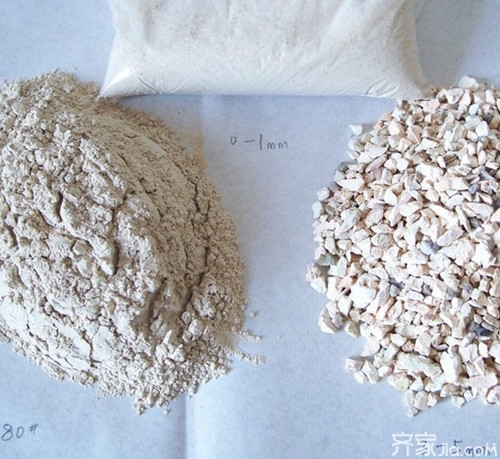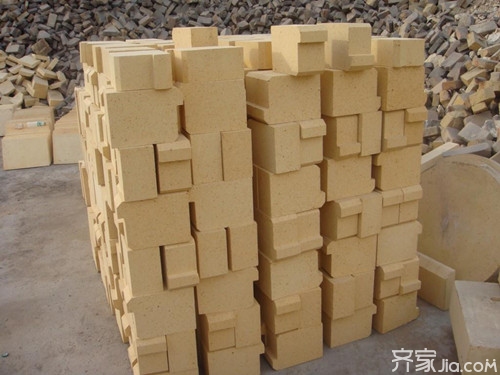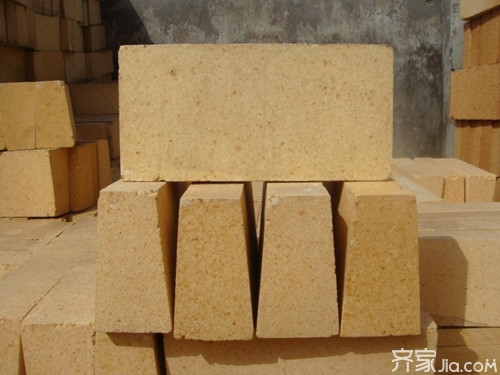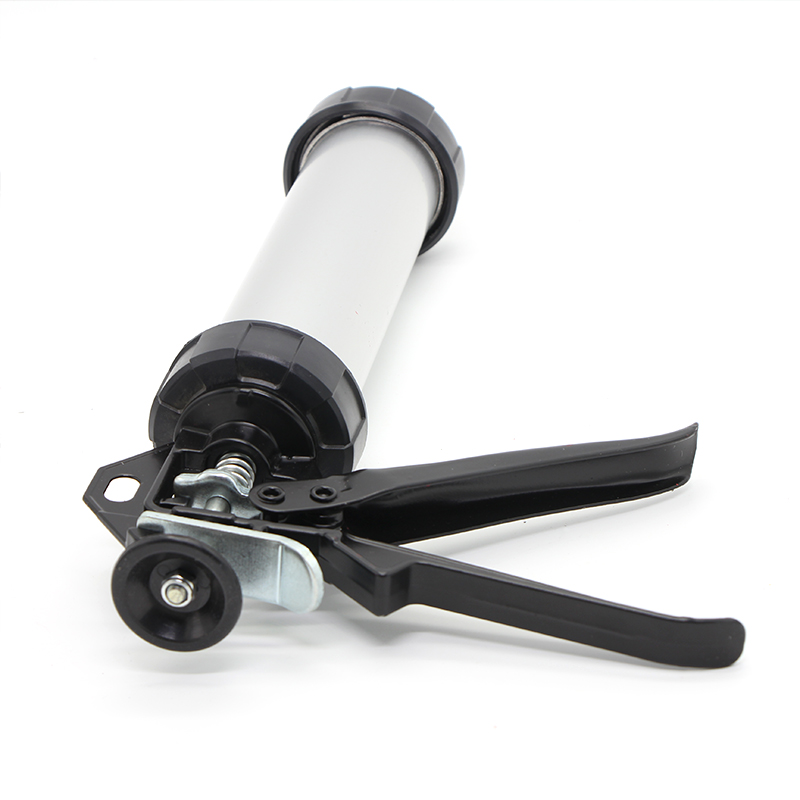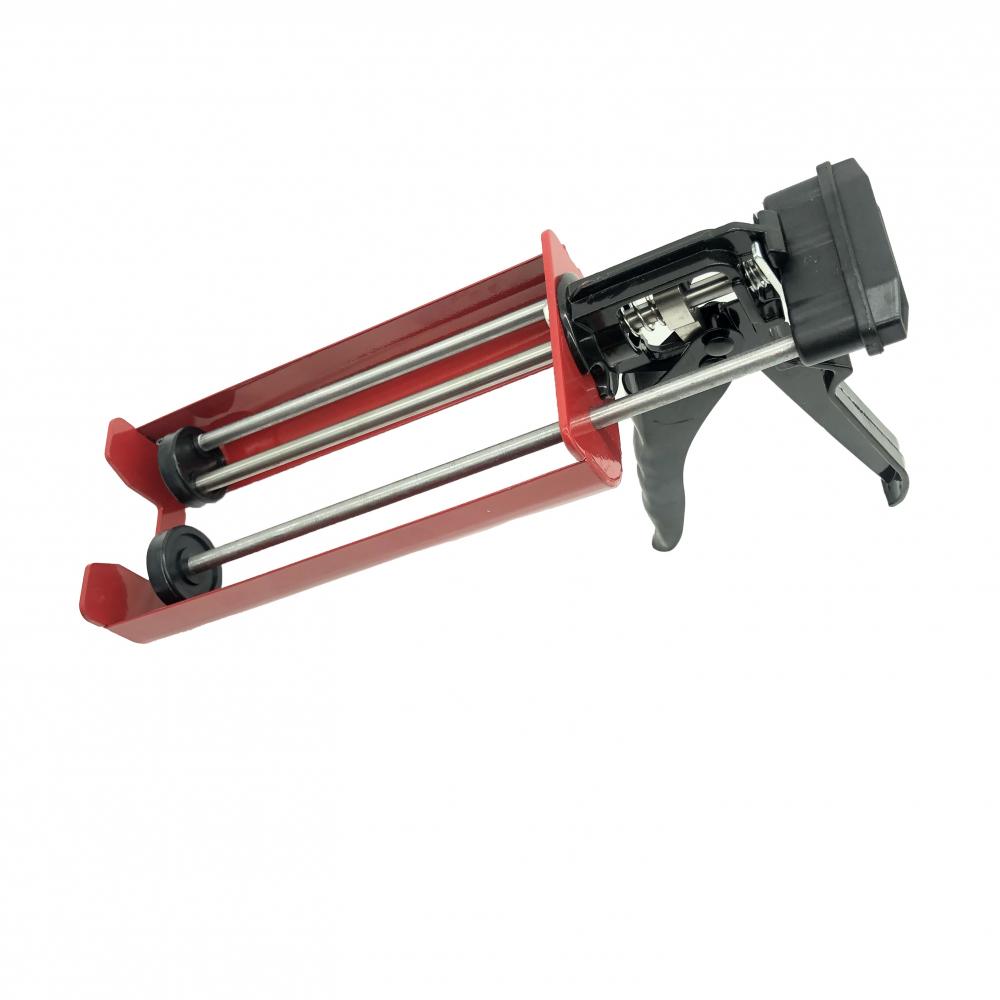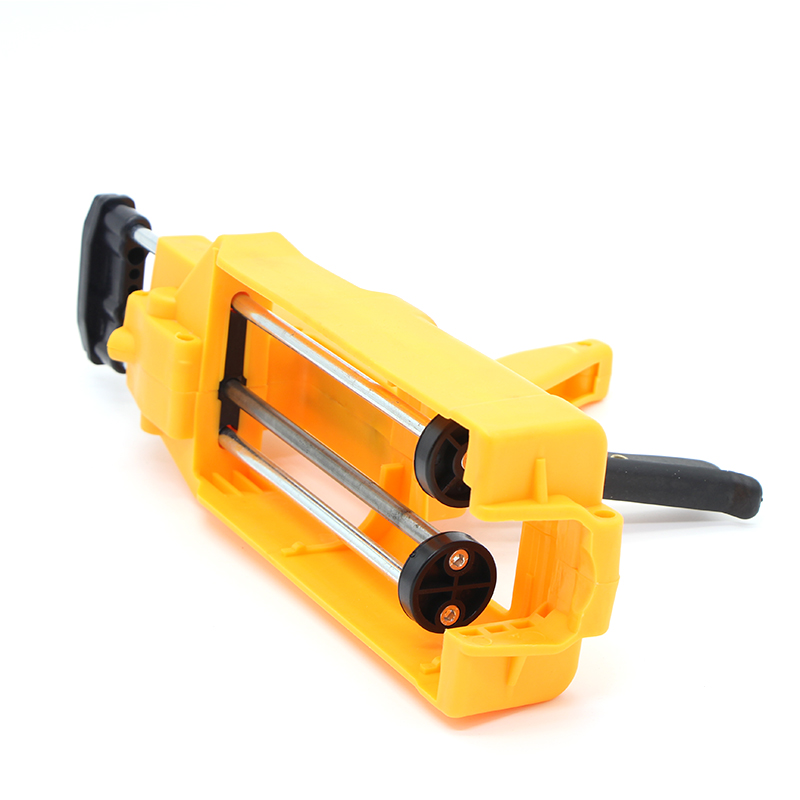What is monolithic refractories ? The monolithic refractories consist of a mixture of fire-resistant aggregates and powders, binders and admixtures with a certain particle size gradation, also known as bulk refractories. Used for lining of thermal equipment. It can be used directly without baking. Compared with refractory bricks, it has the characteristics of simple process (because it eliminates the firing process), energy saving, low cost, and easy mechanized construction. The use of some thermal equipment is better than fire bricks. So, what is the classification of monolithic refractories? Let's take a look with Xiaobian. What are the classification of amorphous refractories? According to construction methods and material properties, monolithic refractories can be divided into pouring materials, plastics, ramming materials, spraying materials, projection materials and coatings. Pouring material A material with good fluidity after stirring with water. After molding, it needs to be properly cured to make it coagulate and harden. It can be used after baking according to a certain system. The castable is made of aluminosilicate clinker, corundum material or basic refractory clinker as aggregate; the lightweight castables are expanded perlite, vermiculite, ceramsite, alumina hollow spheres as aggregate. Calcium aluminate cement, water glass, ethyl silicate, polyaluminum chloride, clay or phosphate and the like are used as binders. Admixtures depend on the conditions of use and their role is to improve construction performance and improve physical and chemical properties. Casting material construction methods include vibration method, pump injection method, pressure injection method, spray method and so on. Liners are lined with castables, often with metal or ceramic anchors. Such as adding stainless steel fiber reinforced, it can improve its resistance to mechanical vibration and thermal shock resistance. The pouring material is used as the lining of various heat treatment furnaces, ore roasting furnaces, catalytic cracking furnaces, reforming furnaces, etc. It is also used as lining for smelting furnaces and high-temperature melt flow baths, such as lead-zinc melting furnaces, tin baths, salt baths Furnace, tapping or tapping tank, steel ladle, steel vacuum degasser, etc. Plastics Plastic or mud. When an appropriate external force is applied, it is easily deformed without cracking; after the stress is relieved, it is no longer deformed. The plastic materials are semi-silicon, clay, high-aluminum, zircon, carbonaceous, and light plastic. Plastics must be incorporated into plasticized materials. Plasticized materials are mostly highly plastic clays. Plasticizers can also be used to increase the plasticity of such clays. Plasticizers include carboxymethyl cellulose, dextrin, lignosulfonate, and the like. The binders that can be used in plastics include plastic clay, phosphoric acid, aluminum dihydrogen phosphate, aluminum sulfate, and the like. Aluminum phosphate plastics with phosphoric acid or phosphate binders react chemically with aluminum oxide during storage to form insoluble aluminum orthophosphate and harden the sludge. Therefore, preservatives such as oxalic acid, citric acid and acetyl can be added. Acetone and so on. The construction method generally uses hammering or vibration. When you build plastic linings with plastic, you must configure metal or ceramic anchors. Plastics can be used as the inner lining of thermal equipment such as soaking furnaces, heating furnaces, boilers, etc., and also used to wrap water cooling tubes for heating furnaces. Spraying material A fire-resistant mixture for spraying or spraying with a jet engine. According to the gunning method, it can be divided into wet spraying (or slurry spraying), semi-dry spraying, and fire (flame) spraying. Wet spray coating uses compressed air to spray mud containing 20 to 40% of fire-resistant powder, which can achieve high mist dispersion, high adhesion rate, and can perform relatively uniform thin layer spray compensation. Semi-dry gunning is to add water to the nozzle to spray the fire-resistant powder compressed by the compressed air. The amount of water added is 11 to 14%. The adhesion rate is low, and thicker layers can be sprayed. Fire method gunning is dry gunning, and the gunning material is sent to the flame of the fuel-oxygen gun. The gunning material is partially melted in the nozzle flame and attached to the brick lining. Spraying materials are aluminosilicate, alumino-silicon zirconium, magnesia, magnesium calcium, magnesium chromium, etc. The binders used are sodium silicate, phosphates, polyphosphates, bitumen, resins and the like. In order to increase the adhesion rate, additions such as clay, swelled bentonite, and lime were added. In order to ensure that the gunning material can achieve good sintering, sintering aids such as serpentine, pure olivine, lime, fire-resistant clay, iron oxide, etc. are also added. Fire-resistant paint Material applied to refractory brick lining. Depending on the application requirements and construction methods, fire-resistant paints are formulated into muddy and muddy forms. The binding agent used varies from material to material such as phosphate, polyphosphate, and magnesium sulphate for the preparation of continuous casting tundish; clay, aluminum dihydrogen phosphate, aluminum chromophosphate, water glass, etc., for the formulation of high-aluminum coatings. . In order to improve the spreadability of paints, additives such as plasticizers are generally added. Coatings are mainly used as protective coatings for various thermal equipment linings, or for repairing local damage of brick linings. Ramming material A bulk refractory material with very low or no plasticity. Materials are siliceous, clayy, high-aluminum, corundum, zircon, silicon carbide, carbonaceous, and magnesium. According to the ramming material and the conditions of use, inorganic binders or organic binders similar to the castables can be used, such as water-soluble dextrins, carboxymethyl cellulose, lignin, sulfonates, polyvinyl alcohol; Thermoplastic paraffin, bitumen, tar, phenolic resin, atactic polypropylene, etc. The ramming material adopts forced ramming construction, the porosity is low, and the density is high. Therefore, in the amorphous refractories, the ramming material is particularly suitable for the lining of smelting furnace linings and various containers for high temperature molten metal. Such as open hearth and electric furnace hearth, all kinds of induction furnace lining, blast furnace iron ditch, steel drums and so on. Projectile A semi-dry cast mud lined with a projection machine. Mainly used to build the overall steel lining. Materials are siliceous, waxy, clayy, high-aluminum and zirconite. The most used are high-silica and high-aluminum projectiles. The above is a brief introduction to what is the classification of monolithic refractories and monolithic refractories . I hope to help you. For more information, please visit this website. Stay tuned. Decoration material knowledge
The caulking gun is a simple mechanical device that uses the principle of lever. It can be used in combination with a rubber bucket or a glue stick, and it is convenient to press the glue into the rubber bucket from the tip, which greatly saves operating time. It is a Tool for bonding, sealing, caulking and gluing, widely used in architectural decoration, electronic appliances, automobiles and auto parts, ships and containers, etc.
Caulking Gun,Aluminum Caulking Gun,Small Caulking Gun,Refillable Caulking Gun Behappy Crafts (suzhou)Co.,Ltd , https://www.behappyindustry.com